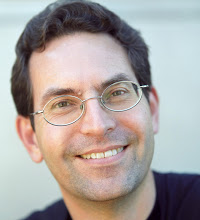Patient Generated Data Goes Mainstream
 John D. HalamkaSince 1999, Patientsite, the BIDMC shared record between doctor and patient, has enabled patients to track blood pressure, glucometer readings, activities of daily living, mood, pain etc. but few patients have used those features.
John D. HalamkaSince 1999, Patientsite, the BIDMC shared record between doctor and patient, has enabled patients to track blood pressure, glucometer readings, activities of daily living, mood, pain etc. but few patients have used those features.
Why? Because it requires time and energy to maintain that data.
What if data gathering was entirely passive?
Today, I own a Withings bathroom scale and Withings Pulse O2 wearable monitor. When I get up each morning, my weight, body mass index, and fat percentage is measured by my scale and wirelessly sent to the Withings cloud where it is routed to my Microsoft HealthVault account and my iPhone Withings app.
As I go through each day, my Pulse O2 device tracks my sleep pattern, my activity level (distance and elevation), my heart rate, and my pulse ox measurement. Using Bluetooth Low Energy (BTLE), all the data is instantly synched to my iPhone and viewable by hour, by day and by week.
There is nothing I have to do. All of this just happens as part of my activities of daily living.
There are three factors that are combining to create a perfect storm for patient generated data to enter the mainstream
- The devices, standards (content, vocabulary, transport), and usability are good enough. The total expense of acquiring/using them is cheap enough
- ACOs are beginning to accept the fact that home care devices such as pulse oximeters, blood pressure cuffs, electronic scales, glucometers, and sleep monitors will be essential to care delivery between episodic visits with clinicians.
- It’s likely that Meaningful Use and other government programs will offer stimulus (or penalties for non-compliance) for incorporation of patient generated data into the electronic health record.
Every year I take on a personal project and do my best to roll it out in production. In the past that has included administrative simplification, healthcare information exchange, patient/family engagement, Google Glass, mobile support for our consumer/clinician facing applications, shared care plan creation etc.
Patient generated healthcare data is the next key frontier in care coordination, population health, and clinical research. Although Beth Israel Deaconess has invested significantly in home care, care management, and telemedicine, it has not yet made the commitment to be a leader in patient generated healthcare data.
I’ve used the pulse oximeter on Mt. Fuji to track my performance and I’ve learned that I walk an average of 20,000 steps per day during my life as a healthcare CIO and farmer. I’ve learned that sleep pattern is instant deep sleep for an hour, punctuated by light sleep/deep sleep intervals for 30 minutes, followed by waking in 4 hours. I’ve watched variation of my weight - weekends have more activity and less time eating, so by Sunday night I’m at the lowest point of the week. During the weekday meetings and office time, I eat more and exercise less. The good news is that over the course of each month, my weight peaks and troughs cancel each other.
For the next year I’ll be exploring patient generated data, both in devices I use myself, and in the creation of novel applications that enable such data to be incorporated in ACO and clinician workflow without creating data overload for any stakeholder.
I’ll document all my lessons learned along the journey.
| This post was first published by Dr. John D. Halamka in his blog, Life as a Healthcare CIO and it is reprinted by Open Health News under the terms of the Creative Commons Attribution-Noncommercial-Share Alike 3.0 United States License. The original post can be found here. |
- Login to post comments